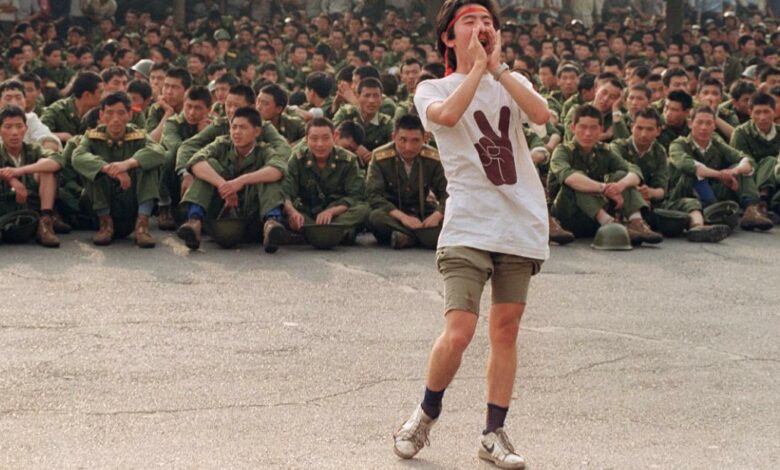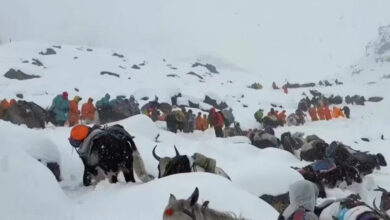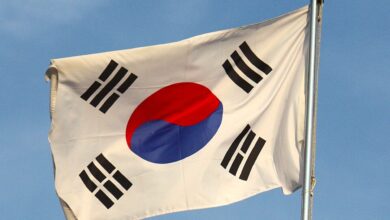
Hong Kong (CNN) – For decades it was a symbol of freedom on Chinese controlled soil: every June 4, come rain or shine, tens of thousands of people would descend on Victoria Park in Hong Kong to commemorate the victims of the 1989 Tiananmen Square massacre.
The atmosphere would be at once defiant and somber. Speakers would demand accountability from the Chinese Communist Party for ordering the bloody military crackdown that cost the lives of hundreds, if not thousands, of unarmed pro-democracy protesters on that fateful day in Beijing.
In memory of the dead, at 8 p.m. every year the park would turn into a sea of candles, held high by people vowing never to forget.
This year, whether those candles light up once again will offer a litmus test for Hong Kong, its freedoms and aspirations, and its relationships to both the rest of China and the world.
Authorities in mainland China have always done their best to erase all memory of the massacre: Censoring news reports, scrubbing all mentions from the internet, arresting and chasing into exile the organizers of the protests, and keeping the relatives of those who died under tight surveillance. As a result, generations of mainland Chinese have grown up without knowledge of the events of June 4.
But Hong Kong has always had the ability to remember. In the years immediately after the massacre, Hong Kong was still a British colony beyond the reach of China’s censors. And even after Britain handed sovereignty to China in 1997, the city enjoyed a semi-autonomous status that allowed the vigil to continue.
Recently though, the candles in Victoria Park have been dimmed. Authorities banned the vigil in 2020 and 2021 citing coronavirus health restrictions — though many Hongkongers believe that was just an excuse to clamp down on shows of public dissent following pro-democracy protests that swept the city in 2019.
In 2020, despite the lack of an organized vigil, thousands of Hongkongers went to the park anyway in defiance of the authorities. But last year, the government put more than 3,000 riot police on standby to prevent unauthorized gatherings — and the park remained in darkness for the first time in more than three decades.
And this year looks to be no different.
A litmus test
Many say the Hong Kong government would be stretching credulity if it again banned the event on the grounds of Covid. Yet that appears to be what outgoing Chief Executive Carrie Lam has suggested. At the end of May, Lam gave an equivocal response when asked whether people who gathered at Victoria Park on June 4 would face legal repercussions.
“As far as any gathering is concerned, there are a lot of legal requirements,” Lam told reporters. “There is a national security law, there are the social-distancing restrictions, and there is also a venue question… whether a particular activity has received authorization to take place in a particular venue has to be decided by the owner of the venue.”
Underlining the government’s opposition to the vigil, Hong Kong police on Thursday said it had noticed people “promoting, advocating and inciting others to participate in unauthorized assembly in the area of Victoria Park” on June 4 and advised the public not to attend.
The police cited Covid measures and a public order ordinance and warned those who advertised or organized unlawful assemblies could be charged and jailed. There would be a “sufficient deployment” of police officers in the area, said Senior Superintendent Liauw Ka Kei, adding police had not received any applications for public memorials.
Asked whether people there could be arrested for carrying flowers or wearing black, the color of protest in Hong Kong, Liauw said those who appeared to incite others to join unlawful assemblies would be stopped and searched, and reiterated illegal assembly carries a five-year maximum jail term, while those found guilty of incitement could receive up to 12-months.
Whether residents will dare to challenge the government and turn out in Victoria Park anyway is yet to be seen, but the national security legislation cited by Lam is a potent deterrent. The Hong Kong Catholic diocese cited concerns over the law when it announced recently that for the first time in three decades its churches would not hold their annual Tiananmen masses.
The national security law is a sweeping piece of legislation that was introduced in Hong Kong by the central Chinese government and came into force at the end of June 2020 — just weeks after Hongkongers had defied the ban on the 2020 vigil.
The central and local governments said the law was needed to restore order to the city after the pro-democracy protests, which they claimed were being fueled by foreign elements. It outlaws acts of secession, subversion, terrorism and collusion with foreign forces; authorities continue to insist it does not infringe on freedoms of press or speech.
“Following the implementation of the national security law, chaos stopped and order has been restored in Hong Kong,” the Hong Kong government said on May 20.
Nevertheless, many Hongkongers say the law has extinguished their dreams of a freer, more democratic city.
Since the law came into effect, pro-democracy activists, former elected lawmakers and journalists have been arrested.
Tens of thousands of Hongkongers have left the city, some fleeing persecution and seeking asylum overseas.
The organizers of the Tiananmen vigil have disbanded and some of them have been jailed. Among their alleged transgressions: acting as “foreign agents” and urging people to commemorate the anniversary of the massacre.
Fates intertwined
The fates of Tiananmen Square and Hong Kong have long been intertwined.
Even before the massacre, when student protesters in Beijing would use the square as a base to push for governmental reform and greater democracy, Hong Kong residents would hold rallies in solidarity. Many would even travel to the Chinese capital to offer support.
And when Beijing decided to send in People’s Liberation Army troops armed with rifles and accompanied by tanks to forcibly clear the square of one such protest — that had attracted tens of thousands of students — in the early hours of June 4, 1989, Hongkongers were among the first to offer support.
There is no official death toll for how many of the mostly student protesters were killed that day, but estimates range from several hundred to thousands, with many more injured. It has also been estimated that as many as 10,000 people were arrested during and after the protests. Several dozen protesters have been executed.
Of those who escaped, some 500 were saved by an underground network dubbed “Operation Yellow Bird,” which helped smuggle the organizers and others at risk of arrest into Hong Kong, still a British territory at the time.
The following year the Hong Kong Alliance in Support of Patriotic Democratic Movements of China began organizing the annual vigil in Victoria Park, and despite fears that Beijing might clamp down on the event following the 1997 handover of sovereignty, it continued to flourish long after Hong Kong’s new incarnation as a Special Administrative
Region of China.
The last time the vigil was held, in 2019, more than 180,000 people attended, according to organizer estimates.
Memory loss
Since that last vigil, there have been many symbolic erasures of the city’s ability to publicly remember, protest and mourn the massacre.
In September 2021, the Hong Kong Alliance — the organizer of the vigil — decided to disband, citing the national security law.
Several of its members were charged with subversion under the security law and some of its core figures, including former lawmakers, have been given prison sentences over charges of unauthorized assembly.
After announcing the group’s dissolution, Richard Tsoi, a former vice-chairman of the alliance, said: “I do believe that Hong Kong people — no matter in individual capacity or other capacity — will continue to commemorate June 4 as before.”
Yet since Tsoi spoke, more reminders of what happened on June 4, 1989, have slipped from sight.
Last December Hong Kong University removed its “Pillar of Shame,” an iconic sculpture commemorating the Tiananmen victims, which had stood on its campus for more than 20 years. Several other local universities have also taken down memorials.
In April, a controversial Tiananmen painting was among several works containing political content removed from Hong Kong’s major new art museum M+, though the institution said the removal was part of a routine “rotation” of exhibited art.
And the Catholic diocese’s decision not to mark the date came just weeks after 90-year-old Cardinal Joseph Zen, one of Asia’s most senior Catholic clerics and an outspoken critic of China’s Communist Party, was arrested along with three other pro-democracy activists.
Still, there are those who say they will continue to speak out in whatever ways they can to keep alive the memory of Tiananmen.
After former Hong Kong Alliance leader Chow Hang-tung was arrested last year, she delivered an impassioned defense in court, condemning what she said was “one step in the systemic erasure of history, both of the Tiananmen massacre and Hong Kong’s own history of civic resistance.”
Even as the court prepared to hand down a 15-month sentence, she remained defiant. “No matter what the penalty is, I will continue to speak what I must,” she said in comments posted online this January.
“Even if candlelight is criminalized, I will still call on people to make a stand, whether on June 4 this year or every June 4 in years to come.”
CNN’s Lauren Lau contributed reporting to this story




